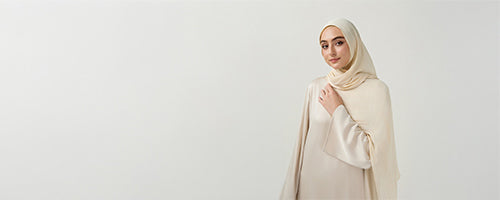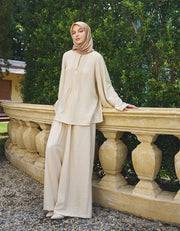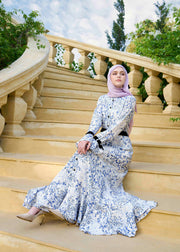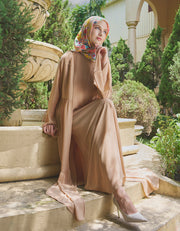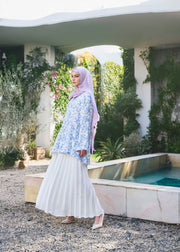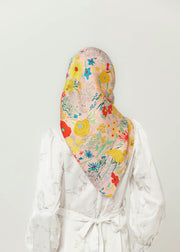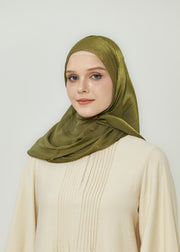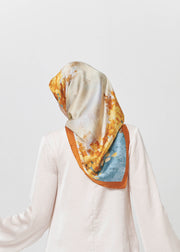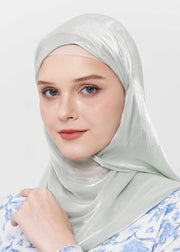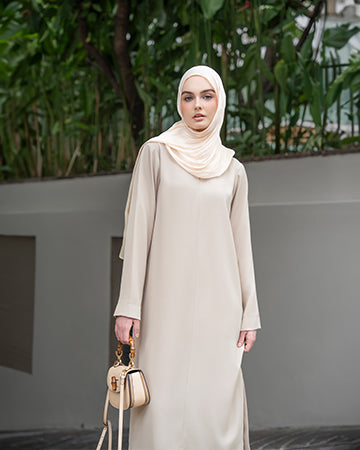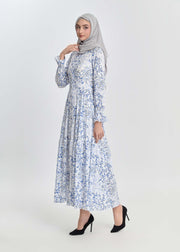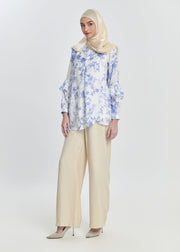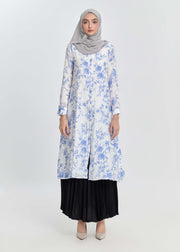How to Choose Comfortable Islamic Clothes for Children
Understanding Your Child’s Needs Before Choosing Islamic Clothes
Before selecting Islamic clothes for children, it’s crucial to consider the unique needs of your child. Children value comfort and freedom of movement far more than style or formality. For them, modest clothing must be something they feel good wearing — not something that restricts them or feels too formal for everyday use. Think about how active your child is, how they respond to certain textures, and whether they’re able to dress themselves easily. These small considerations can make a big difference in building a positive relationship with modest clothing from an early age.
Essentials of Comfortable Islamic Clothes for Children
Children's clothing should never feel restrictive. While modesty is the foundation, practical design and softness are what determine whether a child enjoys wearing an outfit.
The most important comfort elements include:
-
Breathable materials: Ideal for active kids who sweat or get warm easily
-
Tagless seams or soft inner lining: Prevents itching and discomfort
-
Loose silhouettes: Encourages freedom of movement
-
Stretchable bands or flexible closures: Makes dressing easy, especially for younger kids
The Best Fabrics for Children’s Modest Outfits
Fabrics can make or break a child’s clothing experience. Stiff, rough, or heat-trapping materials can quickly become a nightmare during long school hours or mosque visits.
Here are fabric options that work best for Islamic clothes for children:
-
Organic cotton: Soft, absorbent, and ideal for year-round wear
-
Bamboo cotton blend: Great for sensitive skin and hypoallergenic
-
Lightweight linen: Perfect for hot climates, though slightly less stretchy
-
Soft jersey: Stretchable and comfortable, especially in hijabs or innerwear
Avoid synthetic or thick fabrics for everyday outfits. Reserve such materials for special occasions like weddings or Eid.
The Best Fabrics for Children’s Modest Outfits
Dress Smart: Choosing Age-Appropriate Islamic Clothes
Children go through rapid physical and emotional development, so their clothing needs shift as they grow. For toddlers, comfort and simplicity should take precedence. One-piece garments such as long dresses, thobes, or sets with elastic waists are easier to manage for both child and parent. Decorative buttons or overly formal details should be avoided to reduce choking hazards or dressing struggles.
As children enter school age, they begin to express their personalities more clearly. At this stage, combining modesty with self-expression is key. Tunic tops paired with cotton pants, midi skirts with leggings, and soft long dresses can all meet Islamic standards while allowing freedom and creativity. For pre-teens, comfort must remain a priority, but so should confidence. Involving older children in outfit selection can help them feel more in control and connected to their modest identity.
Dress Smart: Choosing Age-Appropriate Islamic Clothes
Islamic Clothes for Children That Support Daily Activities
Children go through various activities during the day—from playing in the park to reading Quran at home. A child’s modest wardrobe should be flexible enough to accommodate this variety.
Here’s how to build a well-rounded modest wardrobe:
-
Everyday sets: Long-sleeved tees with cotton pants or midi skirts
-
Play outfits: Jogger-style abaya or stretchable tunic and leggings
-
Prayer wear: Lightweight abaya or jubba set with minimal stitching
-
Special occasion outfits: Satin or embroidered ensembles for Eid or weddings
When each item has a purpose, it becomes easier to maintain modesty without sacrificing comfort or function.
Islamic Clothes for Children That Support Daily Activities
Easy Hijab Options for Young Girls
For girls beginning to wear hijab, the experience should be positive, empowering, and, most importantly, comfortable. Start with soft, breathable hijab fabrics such as jersey or cotton voile. Slip-on styles and instant hijabs are ideal for beginners since they don’t require pins and are easier to wear correctly. The more a child feels involved in choosing the colors or patterns, the more she will associate hijab with confidence and pride rather than restriction.
Hijab shouldn't be introduced as a rule, but as a natural part of growing up — one that comes with dignity, faith, and a sense of belonging. Offering choices helps children feel ownership of their modest journey, and it eases the transition from casual homewear to modest public wear.
Final Words: Let Children Embrace Modesty with Joy
Wearing Islamic clothes for children should never feel like a burden. With the right combination of comfort, flexibility, and age-appropriate design, modest fashion can become something your child enjoys rather than resists. Visit Minnaba today!

